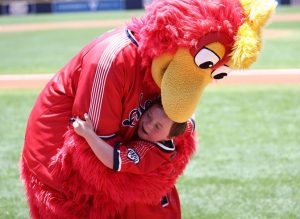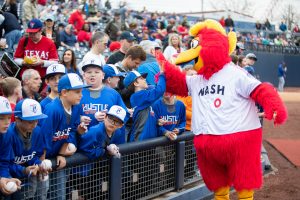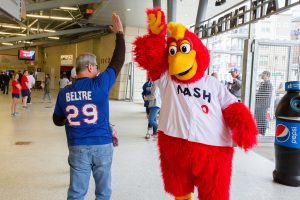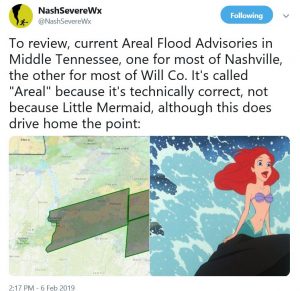It’s all in the details: Five tips for a successful event
By Kellie Davie, APR
Vice President of Awards, IABC Nashville

Business communicators are often tasked to plan and execute the “tactic of all tactics,” a special event. It could be organizing a conference, hosting and running an awards reception, or an event that draws in hundreds of people. Whatever the subject, special events are an effective way to reach audiences in-person and in real-time.
They also can be a bear to run.
Throughout my eleven-plus years in communications, I have helped or took the lead to plan and implement dozens of special events: hotel and restaurant grand openings, trade shows, a week-long fashion show, professional development luncheons, and most recently the Music City Yoga Festival – an annual fundraiser benefiting local wellness nonprofit Small World Yoga attended by several hundred yoga enthusiasts and affiliated exhibitors. Each event has varied in budget size and audience demographics, but the formula for executing them remains the same: it’s all in the details.

Above: Music City Yoga Festival
Being a detail-oriented individual is vital in becoming a successful and respected professional in any field, but it is critical in that of business communications. The ultimate test of this skill comes when implementing a special event for your organization. Here are my five tips in planning and executing a successful event:
Develop a Structured Plan
Like any marketing communications campaign, events need to be structured with intent and purpose, not created on a whim. When developing an event for your organization, consider the following outline:
Goals: Does this event help to advance the mission of your organization, and will it bring back a strong return on investment from execution?
Objectives: Develop SMART objectives: specific, measurable, attainable, realistic, and time specific. Are your objectives designed to change audience behaviors and perceptions of your organization, or are you trying to raise general awareness or a product, service, or client? Strategies: How will you go about reaching these SMART objectives and accomplishing the event you are planning?
Tactics and Tools: What are the communication channels and tools you will need to not only get the message out about your event but to execute it with quality, on-brand and on message?
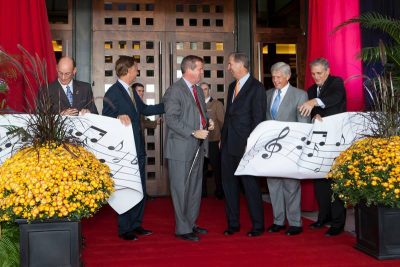
Above: Ribbon-cutting for the Omni Nashville Hotel
Create Detailed Timetables
A successful event is 1,000 things happening on time and in order. A timetable makes that happen. Use every tool available to develop timetables to collaborate with your event team. Google Sheets, Trello, and Basecamp are three tech tool that help keep everyone on the same page. While every organization varies when it comes to its planning processes, there are some standard documents you should make when planning any event:
Timetable: A detailed timetable of what is happening and when is critical in the event planning process to ensure details are not missed. I like creating these in a Gantt chart format that illustrates a project timetable to make it reader-friendly for various teams.
Task List and Affiliated Task Ownership: Task lists can help everyone understand their responsibilities. They also facilitate clear and consistent internal communications to remain clear and consistent.
Run of Show (ROS): Put simply, this is a document that shows what happens when. A Run of Show is essential for speakers/presenters, production teams, and all internal stakeholders involved to know how the event program will run and the specific times each transition occurs. And they cannot be too detailed. David Green, host of NPR’s “Morning Edition,” has a ROS that even includes scripted lines such as “Good morning, I’m David Green.” A good ROS leaves nothing to chance.
* BONUS: It is also helpful to become familiar with other event planning documents including Banquet Event Orders (BEOs) for catering setup, stage plots for audio/visual teams, and detailed scripts for speakers.

Above: Nashville Fashion Week
Know Thy Budget
This sounds obvious, but you would be surprised how often I have seen budgets thrown into disarray when someone gets a little too excited about décor, entertainment, or gourmet food and beverages. Good communication is the key to successful budgeting. Consider the following to help you plan a budget savvy event:
Everyone Must Understand the Budget Limitations: Work closely with your organization’s accounting department to understand how much money is allocated for the event and keep track of all revenues and expenses by creating and updating an event income statement. Trust me; your accounting manager will love and thank you for doing this.
Consider Sponsorships: Are you planning an event on a shoestring budget? Consider reaching out to like-minded brands on sponsorship opportunities. Not only will sponsorships help offset additional costs, but sponsors can help spread the word about your event by sharing it across their communication channels. A “win, win” if you ask me!
Communication is Key
This goes without saying in our profession, but healthy communication practices are critical when planning any event. Everyone involved with your event, whether its attendees, production teams, or sponsors, should be kept informed with the latest updates on what is happening and when. Make sure you are keeping the following in mind to streamline communications with your event planning:
Accuracy: Are all your promotional materials and communication channels (i.e., websites, social media handles, news releases, and e-newsletters) for the event accurate with dates/times, location, presenters, and registration details?
Clarity: Are your event materials easy to read and understand for both internal and external audiences? Does your event messaging and programming reflect the objectives you are trying to achieve?
Team Meetings and Updates: Be sure that all who are involved with implementing the event are continuously updated throughout the planning process leading up to the big day. Schedule regular meetings to review timetables, get status updates on tasks and troubleshoot any possible concerns. Meeting in-person or over the phone goes a long way, plus it ensures communication details don’t get lost in email chains.

Above: Good planning leads to things like IABC Awards
Be Kind
Deadlines, ticket sales, catering and managing a timetable and a budget is stressful and can represent high-stakes tactics for an organization. It’s stressful and can bring out the worst in people, so it is essential to maintain professionalism and show gratitude to those who are involved. As the saying goes, “you catch more flies with honey than vinegar,” so remember to be kind and respectful to others throughout the planning process.
Keep Your Cool: Murphy’s Law is real; anything that can go wrong will go wrong. Be prepared to go straight into problem-solving mode if a speaker fails to show or a delivery isn’t made and find solutions to work around any event issues. You are in control of your work and emotions, so do not let a setback cause damage to your reputation post-event.
Maintain Professionalism: You may be the only one keeping your cool when a problem occurs. That’s where your problem-solving mode can be beneficial. Astronauts and scientists at NASA always expected someone to go wrong during a space flight (and something almost always did). The key is to work the problem and you do that by remaining professional. Expect to isolate that lone wolf who does lose their cool; they aren’t solving the problem(s).
Show Gratitude: Everyone involved with planning the event is putting in extra time to make it a success. Be sure to keep your teams motivated by continuing to thank them and give praise on excellent accomplishments. A genuine “thank you” or “great job” goes a long way with team members and volunteers.
At the end of the day, producing a successful event is all about creating a memorable experience and helping your organization reach its goals. By keeping these tips in mind the next time you plan an event will help you to strengthen your professional development and bring even more value to those you serve.
While we are on the subject of events
Are you interested in sharpening your event management skills? We are looking for volunteers to serve on our IABC Nashville Music City Gold Pen Awards Committee. The Music City Gold Pen Awards is an annual celebration taking place in late August/early September that recognizes Middle Tennessee professionals who exemplify excellence in strategic business communications, management skills, thought leadership, and creativity. Opportunities to get involved with the committee include judging, marketing communications, event logistics, and sponsorship outreach. Please email kdavie@keycompr.com by Friday, March 20, if interested and available.
